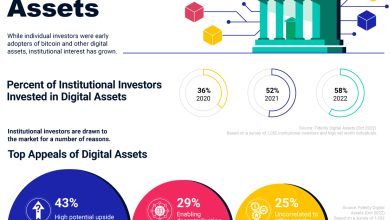Strategies for Diversifying Your Crypto Portfolio

- Understanding the importance of diversification in crypto investing
- Exploring different types of cryptocurrencies to include in your portfolio
- Balancing risk and reward when diversifying your crypto holdings
- Tips for selecting the right mix of assets for a diversified crypto portfolio
- The role of stablecoins and other stable assets in diversifying your crypto holdings
- Rebalancing strategies to maintain a diversified crypto portfolio over time
Understanding the importance of diversification in crypto investing
Understanding the significance of diversification in cryptocurrency investing is crucial for managing risk and maximizing potential returns. Diversifying your crypto portfolio involves spreading your investments across different types of cryptocurrencies, industries, and asset classes. By doing so, you can reduce the impact of volatility in any single asset on your overall portfolio.
Diversification helps to protect your investments from the inherent risks associated with the cryptocurrency market, such as regulatory changes, security breaches, and market manipulation. By holding a variety of assets, you can mitigate the impact of negative events on your portfolio’s performance. Additionally, diversification can provide exposure to different sectors of the crypto market, allowing you to capitalize on emerging trends and opportunities.
When diversifying your crypto portfolio, it is essential to consider factors such as correlation, liquidity, and risk tolerance. Correlation measures how closely the price movements of different assets are related. By investing in assets with low correlation, you can reduce the overall risk of your portfolio. Liquidity refers to how easily an asset can be bought or sold without significantly impacting its price. Investing in liquid assets can help you quickly adjust your portfolio in response to market conditions.
Finally, understanding your risk tolerance is crucial for determining the appropriate level of diversification for your portfolio. Some investors may prefer a more conservative approach, while others may be comfortable with higher levels of risk. By diversifying your crypto portfolio according to your risk tolerance, you can create a balanced investment strategy that aligns with your financial goals and objectives.
Exploring different types of cryptocurrencies to include in your portfolio
When diversifying your cryptocurrency portfolio, it is essential to explore different types of cryptocurrencies to include. By investing in a variety of cryptocurrencies, you can spread your risk and potentially increase your returns. Here are some types of cryptocurrencies to consider adding to your portfolio:
- Bitcoin (BTC): As the first and most well-known cryptocurrency, Bitcoin is often considered a safe investment option. Its high liquidity and widespread acceptance make it a popular choice for many investors.
- Ethereum (ETH): Ethereum is a decentralized platform that enables smart contracts and decentralized applications to be built and operated without any downtime, fraud, control, or interference from a third party.
- Ripple (XRP): Ripple is a digital payment protocol that allows fast, low-cost cross-border transactions. It aims to enable secure, instant, and nearly free global financial transactions.
- Litecoin (LTC): Litecoin is a peer-to-peer cryptocurrency created by Charlie Lee. It is often referred to as the silver to Bitcoin’s gold and is designed for faster transaction confirmation times.
- Cardano (ADA): Cardano is a blockchain platform that aims to provide a more secure and scalable infrastructure for the development of decentralized applications and smart contracts.
By including a mix of these and other cryptocurrencies in your portfolio, you can benefit from the potential growth of different projects and technologies. Remember to research each cryptocurrency thoroughly before investing and consider seeking advice from a financial advisor.
Balancing risk and reward when diversifying your crypto holdings
When it comes to diversifying your crypto holdings, it is essential to balance the risk and reward of each investment. Diversification is a key strategy to minimize risk and maximize returns in the crypto market.
One way to balance risk and reward is to spread your investments across different crypto assets with varying levels of volatility. This diversified approach can help protect your portfolio from significant losses if one asset underperforms.
Another strategy is to consider the correlation between crypto assets in your portfolio. Investing in assets that have low correlations can further reduce your risk exposure and increase the potential for higher returns.
It is also important to conduct thorough research on each crypto asset before investing. Understanding the technology behind the project, the team involved, and the market conditions can help you make informed decisions and mitigate risks.
Tips for selecting the right mix of assets for a diversified crypto portfolio
When it comes to diversifying your crypto portfolio, selecting the right mix of assets is crucial for managing risk and maximizing returns. Here are some tips to help you choose the best combination of cryptocurrencies:
- Research: Conduct thorough research on different cryptocurrencies to understand their fundamentals, use cases, and potential for growth. Look for projects with strong teams, active development, and real-world applications.
- Asset Allocation: Diversify your portfolio across different types of cryptocurrencies, such as large-cap, mid-cap, and small-cap coins. This will help spread risk and capture opportunities in various market segments.
- Risk Tolerance: Consider your risk tolerance and investment goals when selecting assets for your portfolio. Allocate a higher percentage of funds to less volatile assets if you have a low risk tolerance, and vice versa.
- Market Trends: Stay informed about market trends and industry developments to make informed decisions about asset selection. Monitor news, social media, and technical analysis to identify potential opportunities and risks.
- Rebalance Regularly: Regularly review and rebalance your portfolio to ensure it remains diversified and aligned with your investment strategy. Consider selling overperforming assets and buying underperforming ones to maintain the desired asset allocation.
By following these tips, you can create a diversified crypto portfolio that is well-positioned to weather market fluctuations and generate long-term returns.
The role of stablecoins and other stable assets in diversifying your crypto holdings
When it comes to diversifying your crypto portfolio, stablecoins and other stable assets play a crucial role in mitigating risk and providing stability. These assets are pegged to a stable reserve, such as the US dollar or gold, which helps protect investors from the volatility often associated with cryptocurrencies. By including stablecoins in your portfolio, you can reduce the overall risk exposure and ensure a more balanced investment strategy.
Stablecoins offer a safe haven for investors during times of market turbulence, allowing them to preserve capital and avoid significant losses. Additionally, these assets can be used as a hedge against market downturns, providing a reliable store of value when other cryptocurrencies are experiencing price fluctuations. By incorporating stablecoins into your portfolio, you can achieve greater diversification and minimize the impact of market volatility on your overall investment performance.
Furthermore, stablecoins provide liquidity and flexibility in trading, allowing investors to quickly and easily move funds between different cryptocurrencies and traditional assets. This can help optimize your portfolio allocation and take advantage of market opportunities as they arise. By diversifying your holdings with stable assets, you can enhance the resilience of your portfolio and improve your risk-adjusted returns over time.
Rebalancing strategies to maintain a diversified crypto portfolio over time
One of the key strategies for maintaining a diversified crypto portfolio over time is through rebalancing. Rebalancing involves periodically adjusting the allocation of assets in your portfolio to ensure that it remains in line with your investment goals and risk tolerance. By rebalancing, you can take profits from assets that have performed well and reinvest them in assets that may have underperformed, helping to maintain a healthy balance in your portfolio.
There are several approaches to rebalancing a crypto portfolio. One common method is to set target allocations for each asset class or cryptocurrency in your portfolio and periodically review your holdings to see if they have deviated significantly from these targets. If they have, you can sell off some of the overperforming assets and buy more of the underperforming ones to bring your portfolio back into balance.
Another approach to rebalancing is to set specific time intervals, such as quarterly or annually, to review and adjust your portfolio. This can help prevent emotional decision-making based on short-term market fluctuations and ensure that you are consistently following your long-term investment strategy.
It’s important to note that rebalancing should be done thoughtfully and with careful consideration of your investment goals. While it can help maintain a diversified portfolio, excessive trading or frequent rebalancing can also incur transaction costs and potentially erode your returns. Therefore, it’s essential to strike a balance between staying diversified and minimizing unnecessary trading activity.





